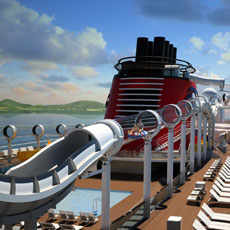VANCOUVER PARALYMPICS MARCH 12 - 21 2010
http://www.vancouver2010.com/paralympic-games/schedule---results/
History Of The Paralympics
Prior to World War II, the vast majority of those with spinal cord injuries
died within three years following their injury. Following WW II, the medical knowledge regarding spinal cord injuries improved dramatically, which then translated into improved rehabilitation techniques. In 1944, wheelchair sport and recreation were introduced as forms of treatment and rehabilitation for people with spinal cord injuries by Sir Ludwig Guttmann at the Stoke Mandeville Hospital in Aylesbury, England. Within four years, sport as therapy developed into an official competition with the development of the World Stoke Mandeville Wheelchair Games.
In the U.S. and Canada wheelchair sports were introduced in a similar manner at rehabilitation hospitals, and in 1958 clubs in the U.S. hosted national games. In 1960, the first "Paralympic" Games were held in Rome, and in 1964 the second were held in Tokyo. Robert Jackson, working as an orthopedic consultant with the Canadian Olympic Team witnessed the Games and noted to Guttmann his disappointment with Canada's absence. Guttmann responded by expressing his own feelings regarding the apparent ambivalence shown by the Canadian Paraplegic Association (CPA) towards sport and recreation. In Guttmann's view, the CPA was preoccupied with occupational rehabilitation, while completely ignoring the benefits of sport. Jackson left promising to organize a Canadian team for the 1968 Games in Israel (Pady, 1984).
The international wheelchair sport scene continued to evolve and in 1966, the second Commonwealth Paraplegic Games were held in Kingston, Jamaica. Here, Ben Reimer represented Canada and was named Canadian athlete of the year
In the United States, 1975 was significant in that President Gerald Ford formed the President's Committee on Olympic Sports. The findings from this commission helped create the Amateur Sports
Act of 1978, which then resulted in the creation of the United States Olympic Committee
(USOC) as the coordinating, agency for all amateur sport in the U.S., forcing the USOC to establish the Committee on Sports for the Disabled and to integrate disability sport within its structure (Dunn, 1997). In 2001 U.S. Paralympics was created as a division of the USOC with several disabilities and specific sports under its auspices (www.usparalympics.com).
One of the disability sport organizations that develops athletes for the U.S. Paralympic teams is the National Wheelchair Athletic Association founded in 1956 with its name changed in 1994 to Wheelchair Sports USA. The impetus for this organization grew from returning war veterans and during its formative years was funded by the Bulova Watch Company, whose Executive Director Ben Lipton was the Wheelchair Sports USA's Chairman for 25 years (www.wsusa.org). TheUnited States Association of Blind Athletes was founded in 1976, the United States Cerebral Palsy Athletic Association in 1978 (now named the National Disability Sports Alliance) and the United States Amputee
Athletic Association in 1981, which eventually became subsummed by Disabled Sports, USA, along with the Dwarf Athletic Association of America. All are Community-Based Organizations represented by U.S. Paralympics within the USOC.
Organizations like these were also being formalized in Canada, with most created following the hosting of the 1976 Paralympic Games, referred to at that time as the Olympiad for the Physically Disabled and Torontolympiad. The only exception was the Canadian Wheelchair Sports Association which was founded in 1967. The Torontolympiad was the first to include athletes with visual impairments and amputations, while athletes with cerebral palsy would not compete in Paralympic Games until 1980 in Arnhem, Holland.
It was the addition of athletes who did not have spinal cord injuries that forced organizers to change the name of the event from the Paralympics to the Olympiad for the Physically Disabled. "The term Paralympics was studiously
avoided because it had the connotation of paraplegic games and so was objected to by the amputee and blind athletes" (R. Jackson, personal communication, July 30, 1997). Paralympics would eventually be chosen as the official term, with Para denoting in parallel to the Olympics and not a shortened version of paraplegic.
The Canadian government firmly supported this multi-disability format and began to recognize and support several new national disability sport organizations. These included the Canadian Amputee Sport Association, the Canadian Blind Sport Association, the Canadian Association of Disabled Skiers, and later, the Canadian Cerebral Palsy Sport Association.
While the creation of new disability sport organizations and multi-disability games provided more equitable opportunities for persons with disabilities, to the Canadian government they also created a number of logistical challenges. The government thus decided to create one umbrella organization
called the Coordinating Committee of Sports for the Physically Disabled (CC-SFD). In 1980, it was renamed the Canadian Federation of Sport Organizations for the Disabled (CFSOD), and in 1989 the Canadian Paralympic Committee (CPC).
The CC-SFD might not have been created except for political turmoil during the Toronto games. The Canadian federal government's financial commitment for hosting the games was withdrawn at the last minute because of the participation of a South African team and the international ban disallowing their participation because of apartheid policies. The South African wheelchair sports team, however, was racially mixed and for this reason, the International Stoke Mandeville Wheelchair Games Federation (ISMWGF) accepted their participation. The Canadian government eventually relented to public pressure and re-allocated its financial commitment to create and support the CC-SFD (Legg, 2001).
In 1980 the Paralympic Games were held in Arnhem, Holland, as Soviet officials hosting the Olympic Games in Moscow claimed to not have citizens with disabilities. In 1984, the Olympic Games were held in Los Angeles, while the Paralympic Games were hosted in two separate locations because of last minute organizational challenges. Wheelchair events were hosted in Stoke Mandeville, while the other disability sport groups competed in New York
. Of particular significance that year was the hosting of demonstration wheelchair events (800 m/women; 1500 m/men) during the Olympic Games. This was the first time an Olympic Games had included wheelchair athletes.
The Seoul Summer Paralympic Games in 1988 marked the beginning of the modern Paralympic movement, with events held in the same venues for both Paralympic and Olympic competitions. Here the Paralympic movement evolved from a disability-based organization to one that was sport focused. This transition was based on seven key recommendations from 23 motions presented at meetings in 1987 as well as impetus from Juan Antonio Samaranch, International Olympic Committee (IOC) President. These motions then led to the creation of the International Paralympic Committee (IPC) in 1989 with Canadian Robert Steadward named President, a position he retained for 12 years.
In 1996 the Paralympic Games returned to North America with the 1996 Summer Games hosted in Atlanta and the 2002 Winter Games in Salt Lake City. The Salt Lake City Games were the first to take place under an IOC-IPC cooperation agreement. The Paralympic Games will return to North America in 2010 in Vancouver-Whistler.
The 2000 Sydney Summer Paralympic Games had 3,824 athletes which eclipsed the size of the 1956 Melbourne Olympic Summer Games and the 1998 Kuala Lumpur Commonwealth Games. With this growth have come issues pertaining to athlete recruitment, numbers of classes, the inclusion of athletes with intellectual disabilities, ensuring equitable opportunities for women and those with severe disabilities, and capitalizing on the strengths of professional staff based at the international headquarters in Bonn, along with the cadre of new and experienced volunteers.
 Due to set sail from Florida's Port Canaveral, the Dream is currently under construction in Papenburg, Germany. Disney Cruise Line's Jason Lasecki talks about the Company's decision to build overseas. "Meyer-Werft is a world-renowned shipyard with incredible craftsmanship and attention to detail ... it's the perfect match between their ship-building expertise and our brand."
Due to set sail from Florida's Port Canaveral, the Dream is currently under construction in Papenburg, Germany. Disney Cruise Line's Jason Lasecki talks about the Company's decision to build overseas. "Meyer-Werft is a world-renowned shipyard with incredible craftsmanship and attention to detail ... it's the perfect match between their ship-building expertise and our brand."






